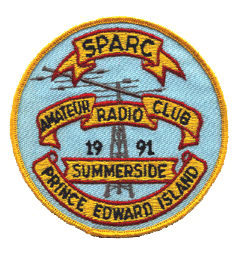Dutch amateur radio society VERON reports the current EMC standard, developed in the last century, no longer suffices
A Google Translation of the VERON article says:
Online newspapers such as Telegraaf , NOS and NU.nl carry articles about LED lighting that emits too much electromagnetic radiation.
The faulty LED lights disrupt wireless connections in and around the house. Radiocommunications Agency therefore starts an investigation into 50 LED lamp suppliers.
But also the EMC-EMF Committee of the VERON has not been idle. The committee members have done a modest study themselves in an EMC lab.
Elektor magazine sent 16 LED lamps
In the April 2018 issue, Elektor has called on its readers to send out disruptive LED lights. The VERON EMC Committee has offered Elektor to test these lamps in an EMC lab. Elektor and VERON will soon publish the results of this research jointly. But we can already “light up” a tip of the veil.
EMC standard exceeded
This small study does not focus on a specific supplier or LED lamp. But it is a wild mix of LED lamps. From both large and small suppliers. And a part of the LED lamps in this test appears to have exceedances of the EMC standard.
A number of lamps do not appear to meet the EMC standard. Especially in the aviation band. Supervisor AT (Radiocommunications Agency) does the formal EMC tests. The VERON passes on the type numbers and brands of the disturbing LED lighting to the AT. Then this can be included in their LED research.
Do only LED bulbs disturb?
No definitely not. It is also not the LED itself that disturbs. But the circuit in the LED lamp to make the supply voltage suitable for the LED is often the culprit. In the photo on the right you can see that the filter network has been omitted in an LED power supply. This saves only a few Eurocent. But on a production of millions of devices, the saving for the manufacturer is enormous. It is therefore no more than a simple economic decision. Solar panel installations also regularly cause disturbances in the frequency spectrum. Especially if they are also equipped with so-called optimizers.
Aren’t those radio amateurs harsh?
As early as April 2002, VERON publishes on disruptions in the frequency spectrum. And the nokokennislink has previously reported problems with EMC. This is about Rijkswaterstaat who experience problems when testing buoys. Radio amateurs operate mainly close to the noise level . And every disturbance is therefore immediately noticeable. The amateur radio frequencies / bands are exclusively assigned to the radio amateurs. And may therefore only be used by them (also internationally). These may therefore not be disturbed by third parties.
Radio amateurs provide emergency communication in case of major disasters
Whether it is about Mexico, Sulawesi, Hawaii, the Philippines, Japan, Peru, India, Nepal or Sint Maarten. Radio amateurs come into action at the moment the communication infrastructure in the country is affected. By making use of radio amateurs and their equipment, an alternative emergency communication network can be set up in a very short time. Radio amateurs, for example, ensure that the rescue operations, relief supplies and evacuations start and stay. But due to the increasing disruption, this alternative is also at risk.
Current EMC standard no longer suffices
The current EMC standard was developed in the 70s of the last century. During this period the fault was caused by a vacuum cleaner or electric coffee grinder. It was assumed that the disturbance was caused outside the home environment. With the current equipment, the malfunction is directly in your own environment. As a result, the current standards are seriously outdated. And this must therefore be adapted to the 21st century. But the industry is not waiting for an adjustment (tightening) of this standard. Because this has economic consequences for the production of devices.
Politics must intervene
The politicians must take responsibility, before it is really too late. The standardization must be adjusted to the current product range. What if the airports decide to equip the runways with these disturbing LED lights? With the current standards, the VHF and transponder communication can also be disrupted.
Demonstration in the House of Representatives
In the Bundestag an EMC demonstration was given by our sister organization DARC. LED lamp “on”, resulting in no more reception on the DAB + radio . The German parliamentarians did not know what they saw. That is why VERON would very much like to give a similar demonstration in our House of Representatives. In order to show our Dutch parliamentarians with their own eyes what the consequences of EMC can be.
Wireless rechargeable electric cars
The industry is now working on a technique to charge electric cars wirelessly. This technique is called WPT-EV (wireless power transfer – electrical vehicle). And that works similar to the electric toothbrushes. Only we are not talking about a 7 Watt LED light. These WPT-EV installations have a capacity of 3 to 20 kilowatts. That is comparable with 400 to 3000 LED lamps together. There are already discussions about the consequences of electromagnetic radiation from high voltage pylons . But what if there is such a large magnetic field in your front yard loading your car?
IARU is committed to standardization WPT-EV
The IARU (International Amateur Radio Union) is in consultation with various international bodies in various working groups. Such as the CEPT, CISPR and ITU-R of the UN. This is to establish standards for this new development before it is installed in our Dutch streets. That is why we are working on an agenda item for the upcoming WRC2019 .
VERON in Google English
https://tinyurl.com/NetherlandsVERON
